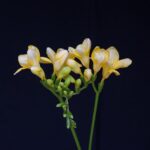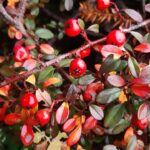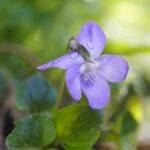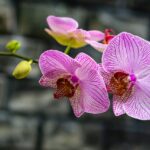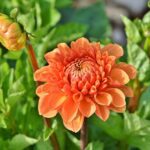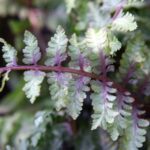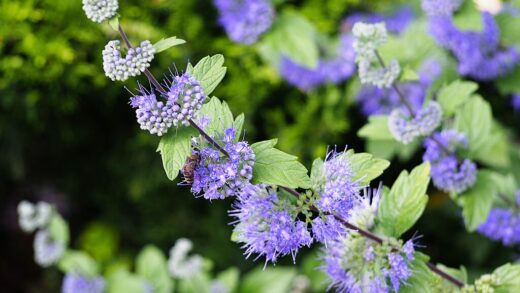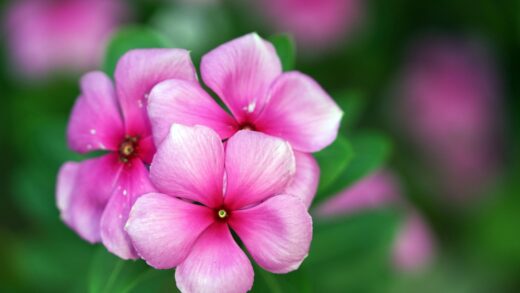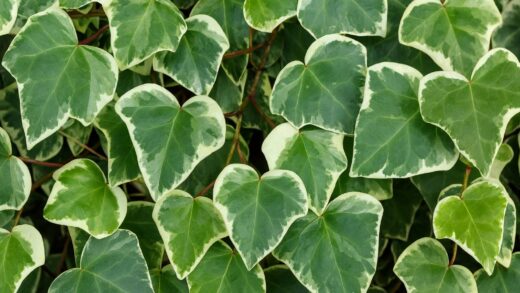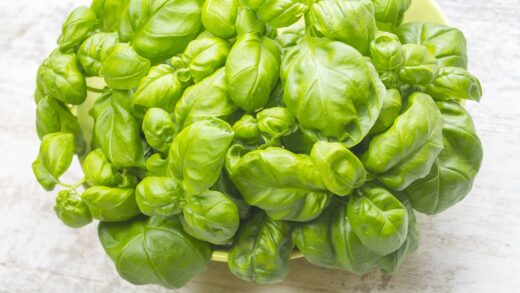Embarking on the journey of planting a Japanese banana is the first step toward creating a dramatic, tropical oasis in your own garden. The process is more than simply digging a hole; it is about creating the perfect foundation for a plant that has an immense appetite for growth and a desire for specific conditions. Successful establishment hinges on a thoughtful combination of site selection, meticulous soil preparation, and the correct planting technique. This initial effort pays huge dividends, as a well-planted Musa basjoo will reward you with astonishingly rapid growth and a commanding presence. Understanding the plant’s needs from the very beginning ensures it not only survives its transition into your garden but thrives, quickly becoming the architectural centerpiece you envisioned.
Selecting the perfect planting site
Choosing the right location for your Japanese banana is the most critical decision you will make in its long-term cultivation. This plant requires a position that receives at least six to eight hours of direct sunlight each day. Ample sunlight is the primary fuel for its large leaves and rapid growth; in a shady position, it will be weak, leggy, and will fail to achieve its impressive stature. An ideal spot would be one that gets full morning sun and perhaps some light, dappled shade during the hottest part of a scorching afternoon, which can help prevent leaf scorch in very hot climates.
Equally important is protection from wind. The enormous leaves of the Japanese banana are its defining feature, but they are also quite delicate and can be easily torn and shredded by strong gusts. This damage is not only aesthetically unpleasing but can also stress the plant. Therefore, you should select a site that is naturally sheltered, such as against a south-facing wall or fence, or nestled in a corner of the garden where buildings or other robust plantings can act as a windbreak. This protection also creates a warmer microclimate, which can help the plant thrive.
Soil drainage is another non-negotiable requirement for the planting site. The Japanese banana loves moist soil, but it absolutely cannot tolerate waterlogged conditions, which will quickly lead to the rotting of its corm and roots. Before you even think about digging, you should assess the drainage of your proposed location. A simple way to do this is to dig a hole about 30 cm deep and fill it with water. If the water drains away within a few hours, the drainage is likely adequate. If it stands for a long time, you will need to either choose a different site or take significant steps to improve the soil structure.
Finally, you must consider the plant’s mature size and growth habit when selecting a site. A single plant can quickly form a clump that is several meters wide and tall. You need to ensure there is enough space for it to expand without encroaching on walkways, overwhelming neighboring plants, or growing into overhead lines. Think about the visual composition of your garden and how the massive scale of the banana plant will fit in. Giving it enough room from the start will prevent problems later and allow its architectural form to be fully appreciated.
More articles on this topic
The step-by-step planting process
Once you have selected the ideal site, the next stage is the physical act of planting, which begins with preparing the soil to create a welcoming environment for the roots. You should start by digging a hole that is substantially larger than the pot the plant came in—aim for at least twice the width and one and a half times the depth. This is not just to accommodate the root ball but also to create a wide area of loosened, amended soil that the roots can easily penetrate as the plant establishes itself. This encourages a strong and expansive root system from the outset.
With the hole dug, your next focus is on enriching the soil. The Japanese banana is a voracious feeder, and providing a nutrient-rich foundation is key to its initial growth spurt. You should mix the soil that you excavated from the hole with a generous amount of organic matter. Well-rotted compost, leaf mold, or aged manure are all excellent choices. For every two parts of garden soil, mix in at least one part of organic amendment. It is also highly beneficial to add a handful of a balanced, slow-release granular fertilizer to this mixture to provide sustained nutrition.
Before placing the plant in the hole, carefully remove it from its container. If the roots are tightly wound or circling the bottom of the pot (a condition known as being root-bound), you should gently tease them apart with your fingers. This encourages the roots to grow outwards into the new soil rather than continuing to circle in their old shape. Place the plant in the center of the hole, ensuring that the top of its root ball is level with, or very slightly above, the surrounding ground level. Planting it too deep can lead to the base of the pseudostem rotting.
After positioning the plant correctly, begin backfilling the hole with the amended soil mixture you prepared earlier. Gently firm the soil around the root ball as you go to eliminate any large air pockets, which can dry out the roots. Once the hole is completely filled, create a shallow basin or “moat” of soil around the base of the plant. This will help to direct water straight to the root zone. Finally, give the plant a deep and thorough watering, allowing the water to soak in and settle the soil firmly around the roots, ensuring good contact and a successful start in its new home.
More articles on this topic
Propagation through division of the corm
Propagation by division is the most reliable and common method for creating new Japanese banana plants, and it is an excellent way to manage a mature, expanding clump. This technique involves separating the underground corm, or rhizome, into multiple pieces, each capable of growing into a new, independent plant. The best time to undertake this task is in the early spring, just as the plant is emerging from dormancy and new growth shoots are visible. Performing the division at this stage gives the new plants an entire growing season to establish themselves before the next winter.
To begin, you will need to carefully excavate the soil from around the base of the plant to expose the corm. You will see a central mass from which the various pseudostems and suckers are growing. The goal is to separate this corm into sections, each containing at least one growing point (a bud or a small sucker) and a healthy portion of the rhizome with some roots attached. For this task, you will need a strong, sharp tool; a clean spade, an old saw, or even a large knife can be used to make decisive cuts through the tough flesh of the corm.
When making your cuts, try to be deliberate and create divisions that are of a reasonable size. A very small piece with few roots may struggle to establish, so it is better to be less greedy and create a smaller number of more viable divisions. Look for natural points of separation between the larger pseudostems. Once you have made the cuts, you can gently pry the sections apart. It is a good practice to allow the cut surfaces of the corm pieces to air-dry for a few hours in a shady spot before replanting. This helps to form a callus over the wound, which reduces the risk of rot and fungal infections.
Replanting the newly created divisions is the final step. Treat each piece as you would a new plant, planting it in a well-prepared hole with plenty of organic matter. Plant them at the same depth they were previously growing and water them in thoroughly to settle the soil. It is important to be patient, as the new divisions may take a few weeks to show signs of new growth while they focus their energy on developing a new root system. Keep the soil consistently moist but not saturated during this establishment period.
Creating new plants from suckers
Propagating Japanese bananas from the suckers, or “pups,” that emerge around the base of the mother plant is another straightforward and highly effective method. These suckers are genetically identical clones of the parent plant and provide an easy way to increase your stock or share with fellow gardeners. This process is best done when the suckers have reached a reasonable size, ideally at least 30-40 cm tall, as this indicates they have likely started to develop their own root system, which is crucial for their survival after being separated.
To remove a sucker, you will need to clear away some soil from the area between the main pseudostem and the chosen pup. The goal is to expose the point where the sucker attaches to the parent corm. Using a sharp, clean spade or a long knife, you need to make a firm, vertical cut downwards to sever the connection between the pup and the main plant. It is important to try and get a piece of the corm and some roots along with the sucker itself; this will dramatically increase its chances of successfully establishing as a new plant.
Once the sucker is separated, carefully lift it out of the ground, trying to keep as much of its root system intact as possible. If the pup has large leaves, it can be beneficial to trim some of them back by about half. This reduces the amount of water the plant will lose through transpiration while its small root system is recovering and trying to establish itself in a new pot or location. This simple step reduces the stress on the newly separated plant and channels its energy into root production rather than supporting a large leaf area.
The newly harvested sucker can be planted directly into a new spot in the garden or, more commonly, potted up into a container with a high-quality, well-draining potting mix. Potting it up first allows you to provide it with a more controlled environment while it recovers. Keep the soil consistently moist and place the pot in a warm, bright location, but out of direct, scorching sun for the first couple of weeks. You will know the propagation has been successful when you see the plant starting to produce new leaf growth, indicating its root system has become established.
Post-planting and propagation care
The care you provide immediately following planting or propagation is critical for the long-term success of your Japanese banana. For a newly planted specimen, the most important task is to maintain consistent soil moisture. The plant’s root system has been disturbed and needs time to recover and grow into the surrounding soil. For the first few weeks, you should check the soil every day or two and water deeply whenever the top few centimeters feel dry. This consistent moisture is vital for preventing transplant shock and encouraging rapid new root development.
It is also wise to hold off on applying any strong, fast-acting fertilizer immediately after planting. The amended soil and any slow-release fertilizer you added during the planting process will provide sufficient nutrients for the initial establishment phase. Introducing high-nitrogen liquid feeds too early can scorch the delicate, recovering roots. It is best to wait until you see clear signs of active new growth—such as the unfurling of a new leaf—before you begin a regular liquid fertilization routine, typically about four to six weeks after planting.
For newly separated divisions or suckers, providing a sheltered and stable environment is key. These young plants are particularly vulnerable to environmental stress. Keep them out of strong, direct sunlight and wind for the first few weeks to allow them to acclimatize and recover from the shock of separation. A bright, shaded spot is ideal. If you have potted them up, this is easy to achieve, but if you have planted them directly in the garden, you might consider creating some temporary shade with a piece of shade cloth or a strategically placed chair.
Patience is a crucial component of post-propagation care. Your new plants may not show explosive growth immediately, as they are investing their energy below the soil surface to build a robust root system. Resist the temptation to overwater or overfeed them in an attempt to speed up the process, as this is more likely to cause harm than good. As long as the existing leaves remain healthy and the soil is kept appropriately moist, you can be confident that the plant is doing what it needs to do. The emergence of the first new leaf is the definitive sign that your propagation has been a success and the plant is on its way.







